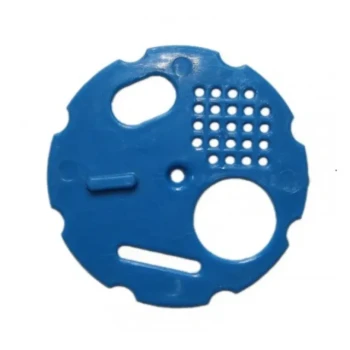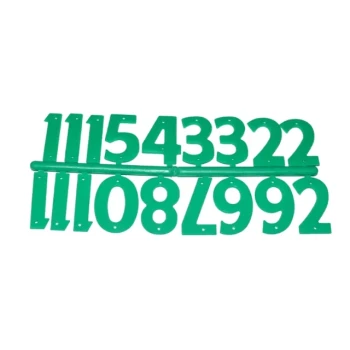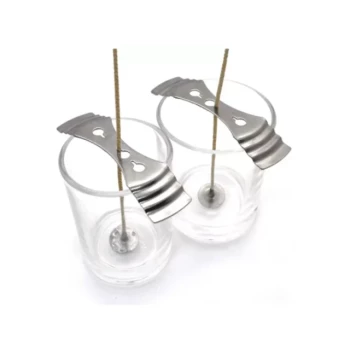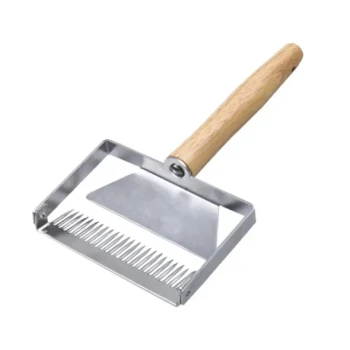As a general rule, the entrance reducer can be removed when daytime temperatures are consistently warm enough that you are comfortable outside in a light sweater. This indicates the colony no longer needs to dedicate excessive energy to staying warm and is strong enough to defend a larger entrance.
An entrance reducer is a temporary tool, not a permanent fixture. Its primary purpose is to aid a colony's defense and temperature control when it is small or the weather is cold, and it should be removed as soon as the colony's need for ventilation and traffic flow outweighs these benefits.
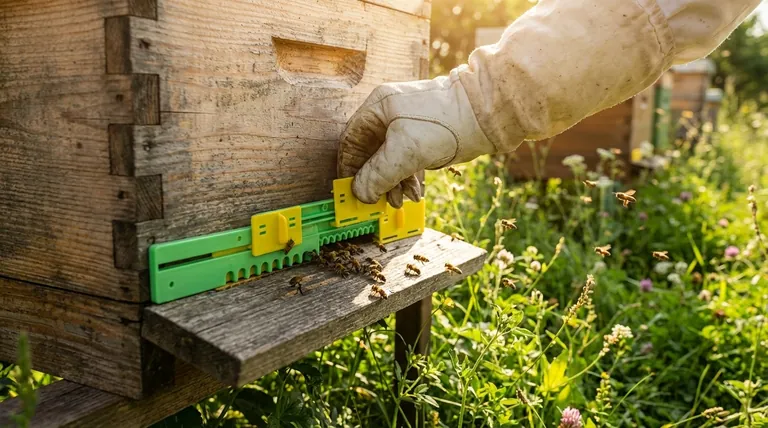
The Core Functions of an Entrance Reducer
Before deciding when to remove it, you must understand why you used it in the first place. An entrance reducer is a critical tool for managing a hive's vulnerabilities, especially during specific times of the year.
Function 1: Aiding in Colony Defense
A smaller entrance is significantly easier for guard bees to defend. This is crucial for new or weak colonies that are prime targets for robbing from stronger nearby hives.
It also helps the colony protect itself from pests like yellow jackets or wasps, which can try to enter the hive to steal honey or brood.
Function 2: Conserving Heat in Winter
During cold winter months, the bee cluster works to maintain a core temperature of around 95°F (35°C). A wide-open entrance creates a significant draft, forcing the colony to expend more energy and consume more honey stores to stay warm.
The reducer minimizes this heat loss, acting like a partially closed door that keeps the worst of the cold air out while still allowing for necessary air exchange.
Function 3: Preventing Winter Intruders
The small opening of an entrance reducer is highly effective at preventing mice from entering the hive to nest during the winter. A mouse can cause catastrophic damage to comb and frames, and a reduced entrance is the simplest line of defense.
Key Signals It's Time for Removal
Your decision should be based on a combination of environmental cues and direct observation of your hive's activity. The "light sweater" rule is a good starting point, but these signals provide a more complete picture.
Signal 1: Consistent Warm Temperatures
When daytime temperatures are consistently above 50-55°F (10-13°C), the colony's need for heat conservation diminishes rapidly. The bees will begin taking more frequent cleansing and orientation flights.
Removing the reducer on these days prevents the hive from overheating and improves ventilation, which is critical for managing internal humidity.
Signal 2: Heavy Foraging Activity
As spring progresses and a nectar flow begins, you will see a dramatic increase in bee traffic. A reduced entrance creates a bottleneck, causing a "traffic jam" of bees trying to enter and exit.
This congestion slows down foraging, reduces the amount of nectar and pollen coming in, and can ultimately limit your honey harvest. If you see bees queuing to get in, the entrance is too small.
Signal 3: Visible "Bearding"
On warm or hot days, a restricted entrance can lead to poor ventilation. To cool the hive, a large number of bees will cluster on the front of the hive in a formation that looks like a beard.
While some bearding is normal on very hot days, consistent bearding is a clear sign the hive is struggling with ventilation and the reducer must be removed.
Understanding the Trade-offs
Managing an entrance reducer is a balancing act. Acting too soon or too late both come with consequences for the health and productivity of your hive.
Removing Too Early: The Risk of Chilling and Robbing
If you remove the reducer before the colony is populous and strong, you leave it vulnerable. A sudden cold snap could chill the brood, and the wide-open entrance makes an easy target for robbing bees from other hives, which can quickly decimate a weak colony.
Leaving It On Too Long: The Cost of Congestion and Overheating
Leaving the reducer in place as the weather warms and the colony booms is a more common mistake. This stifles the hive's potential by creating a traffic bottleneck during the nectar flow, reducing foraging efficiency and honey production. It also increases the risk of overheating and can contribute to swarm preparations.
Making the Right Choice for Your Hive
The optimal time to remove the reducer depends entirely on your colony's specific situation. Use these guidelines to inform your decision.
- If you have a new package or small nucleus colony: Be conservative. Prioritize defense by keeping the entrance reduced until the colony has built up its population across several frames and can clearly defend itself.
- If you have a strong, established hive coming out of winter: Prioritize traffic flow. Remove the reducer as soon as consistent warm weather arrives and you see heavy flight activity to maximize foraging during the first nectar flows.
- If you are managing a hive through fluctuating spring weather: Use a graduated approach. Start with the smallest opening in deep winter, move to the medium opening on warmer days, and remove it entirely once the weather has stabilized and the colony is booming.
Ultimately, observing your bees and understanding their needs is the most reliable guide for managing your hive effectively.
Summary Table:
| Signal | What to Look For | Why It Matters |
|---|---|---|
| Warm Temperatures | Consistent daytime temps above 50-55°F (10-13°C) | Reduces need for heat conservation; prevents overheating. |
| Heavy Foraging | Bees creating a 'traffic jam' at the entrance | A bottleneck slows down nectar collection, limiting honey harvest. |
| Visible Bearding | Bees clustering on the hive's exterior on warm days | Indicates poor ventilation; the hive is struggling to cool itself. |
Equip your apiary for success with HONESTBEE.
Managing your hives effectively requires the right tools for every season. As a trusted wholesale supplier to commercial apiaries and beekeeping equipment distributors, HONESTBEE provides the durable, high-quality supplies you need to support strong, productive colonies—from entrance reducers for winter protection to equipment that maximizes summer honey flows.
Let's discuss your specific needs. Contact our team today to learn how our wholesale-focused operations can benefit your business.
Visual Guide
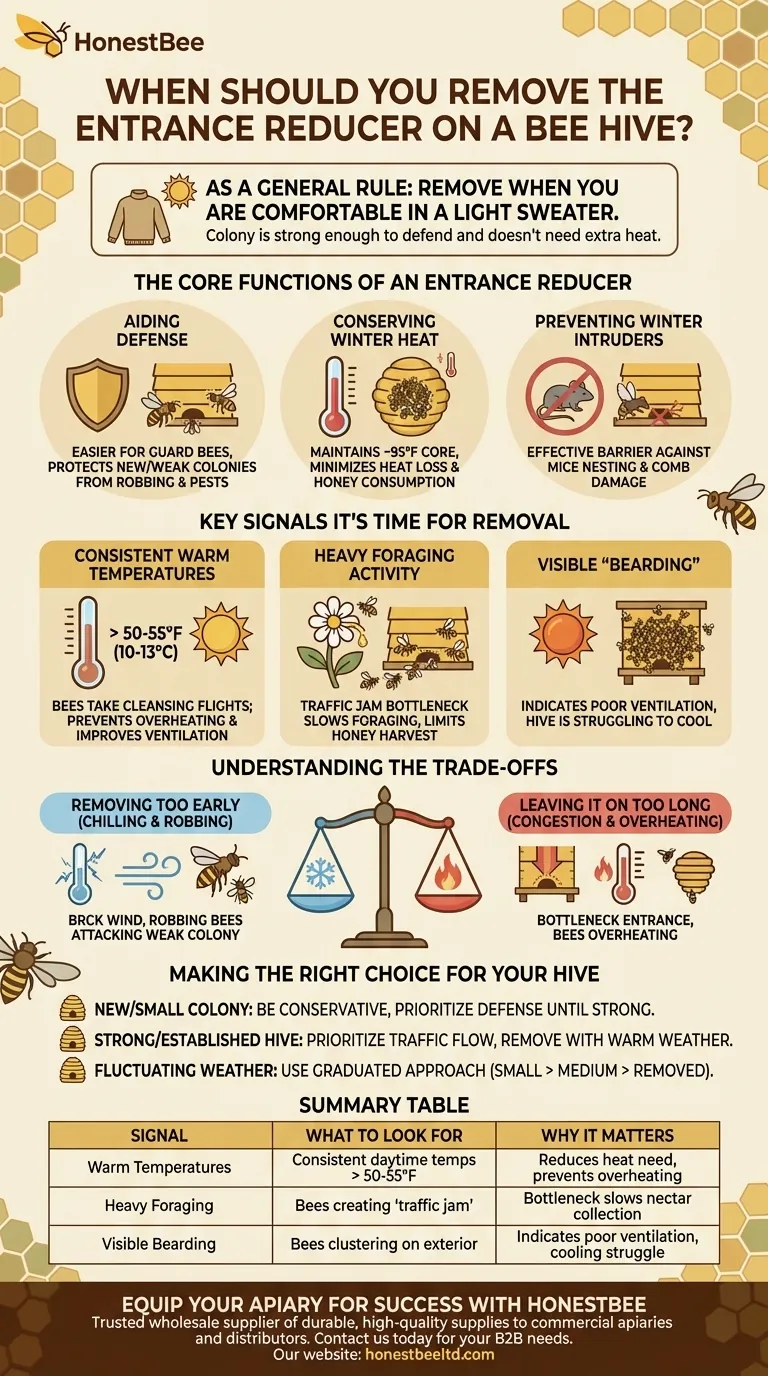
Related Products
- Multi-Functional Sliding Hive Entrance for Beekeeping
- Multi-Functional Rotary Hive Entrance Disc for Beekeeping
- HONESTBEE Advanced Ergonomic Stainless Steel Hive Tool for Beekeeping
- HONESTBEE Professional Long Handled Hive Tool with Precision Cutting Blade
- Professional Insulated Winter Hive Wrap for Beekeeping
People Also Ask
- What are the different entrance sizes for an 8 or 10-frame Langstroth hive? A Guide to Seasonal Management
- What is the purpose of placing an object in front of the hive entrance after a move? A Guide to Forced Reorientation
- What size is the entrance hole in a native bee hive? The 13mm Standard for a Thriving Colony
- How does entrance configuration vary seasonally for beekeepers? A Guide to Year-Round Hive Health
- Why is a smaller entrance size beneficial for a beehive? Boost Hive Defense & Productivity

